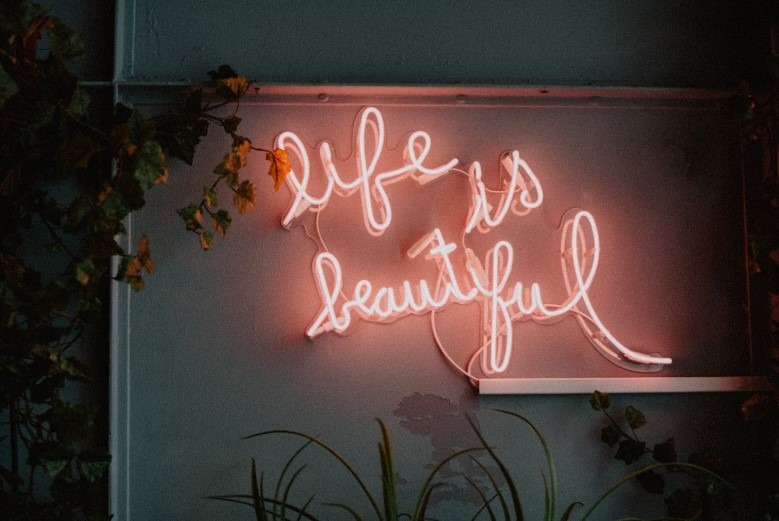
09 Aug Detailed Guide On: Do Neon Signs Get Hot?
Imagine yourself strolling through the streets of New York City at night while being confronted by an eye-catching display of vibrant signs competing for your attention. Neon signs stand out among the flashing lights, sending their distinctive glow over the streets. However, while you examine these fascinating works, you might ask, “Do neon signs get hot?”
This comprehensive guide will address your pressing inquiries related to neon signs. From dispelling myths to revealing the science behind neon signs, we’ll look at every detail you need to know about their heat, safety, and more.

-
Myth: The Terms Neon Light And LED neon Light Are The Same
- Contrary to popular belief, “LED neon signs” and “neon light” are not interchangeable. LED signs and neon signs are different from one another. They are created and function in very different ways. Neon signs are made by skilled people using glass tubes and gas. On the other hand, light-emitting diodes, tiny light bulbs, are used to create LED signs. Let’s clarify this usual misunderstanding.
-
Myth: Neon Signs Contain Harmful Chemicals And Toxic Gasses
- Fact: Many people ask us if neon is poisonous or believe neon signs are dangerous without thorough research. Let’s clear the myth.
- Gasses used in neon lights are called neon or another one called argon. If you are curious, is neon gas toxic? Then, these gasses aren’t dangerous because they are already present in the air around us.
- Some neon signs made up of argon tubes may contain a small amount of mercury vapor. But the fluorescent lights you use at home also contain this same mercury. You should only be worried about mercury exposure if exposed to it for an extended period.
- Are broken neon signs dangerous? If the bulbs or signs break, you need to be cautious and carefully handle them. If these are your concerns regarding neon signs, you can relax because there is no need to worry in most cases.
- Some companies try to make LED lights appear better by instilling fear in consumers by spreading that neon lights are bad for your eyes. However, a 2010 investigation discovered that LEDs contain potentially hazardous materials like lead and arsenic. An excessive amount of the blue light that LED lights emit might harm your eyes and cause eye-related problems.
-
Myth: Neon Signs Are Less Environmentally Friendly(Or Recyclable) Than Led Signs
- Fact: Are neon signs bad for the environment? Well, every part of a neon sign can be reused. It applies to the glass tubes as well as the gas they carry. Therefore, it is not as harmful as most people believe the toxicity of neon. Also, they consume less energy than certain other types of lights. A typical neon sign uses under 100 watts of electricity, less than a standard lightbulb you might have at home. With this example, we have tried to clear the misconception regarding the toxicity of neon.
- On the contrary, if we talk about LED lights, most of them are produced overseas, in regions like the Far East, so shipping them here also affects the environment.
-
Myth: Neon Signs Are High Voltage And Therefore Dangerous To Touch
- Fact: We usually use bright NY Signs that need a special source of electricity. This power source emits a powerful electrical force known as voltage, similar to a transformer. Don’t worry; the transformer automatically adjusts and only draws as much electricity as the sign requires. Consider filling a large container with water, using what you need.
- Many people asked us if neon signs use a lot of electricity. For instance, even if the transformer can supply 8,000 units, the sign might only require 6,000. So, there’s still a lot of power, but not all of it is used. And even though it sounds like a lot, it’s not dangerous because it uses less electricity.
- We provide transformers that are specially protected for the neon signs. It indicates that the power will be cut off immediately if the neon tube in the sign breaks.
-
Myth: Neon Tubes Get Very Hot
- Fact: Neon signs are safe, and there is no need to be concerned! If you happen to touch a neon sign, you may sense warmth, but you won’t sustain burns. Also, if you think neon signs are a fire hazard, here is the answer. If the neon sign has been made with the proper process and has the right-sized power source, that is, a transformer for the number of neon tubes, it will not get hot. Moreover, the installation should be carried out by a skilled person to prevent any fire hazard.
-
Myth: Neon Signs Are Not As Bright Or Versatile As Other Lighted Signs
- Fact: LED signs are bright compared to neon signs when they’re brand new. But neon signs remain bright for a long time, whereas LED signs can dim over time.
- Here’s why: Since so many incredibly tiny bulbs are used to make LED signs, the sign will become dim in that spot if even one stops working. And if too many bulbs fail, replacing the entire LED sign might be necessary.
- Also, neon tubes are round tubes that give off light around them at a 360-degree angle. Moreover, neon signs last many years, and neon glows in the dark. However, the LED alternatives designed only illuminate the front, maybe the back, and half of the sides.
-
Myth: Led Alternatives To Neon Have A More Comprehensive Range Of Standard Colors
- Fact: It has roughly 40 different colors, and neon glows in the dark, creating a fantastic atmosphere. However, if you choose LED signs over neon, you will have fewer color options; typically, there are just 8 fixed hues.
-
Myth: Neon Signs Are Fragile And Do Not Last As Long As Other Lighted Signs
- Fact: Neon tubes are indeed fragile because they’re made of glass, which can break if not treated gently. However, if we move and install them carefully, we can prevent them from breaking. Consider how we handle everyday glass items like cups and plates without being concerned that they will break. Despite questions like do neon signs burn out? They are almost similar to any glass items, so neon signs last without breaking if we cautiously handle them.
- Curious about how to fix a neon sign with a broken tube? Contact VIDA Signs, and we’ll be ready to help.
-
Myth: Neon Signs Are More Expensive Than Led Alternatives To Neon
- Fact: Neon and LED signs are produced by multiple companies in various methods. We are confident in the quality of our neon signs because they are meticulously crafted without any shortcuts. According to what we’ve noticed, the prices for both types of signage are similar; however, LED signs might cost slightly more.
-
Myth: Fireman’s Switch Is Needed For Neon Sign Installations
- Fact: A fireman’s switch is necessary when a neon sign is connected directly to the main electrical supply or when it is very bright consuming more than 100 watts of light. Some venues for exhibitions may require a fireman’s switch with neon signs. But it’s just a rule you want to adhere to in your spaces; it’s not a legal requirement.
-
Myth: Led Alternatives To Neon Are Better Options Than Real Neon
- Fact: Depending on the project’s requirements and your particular preferences, you can choose between neon and other alternatives. It all depends on what you like and what works best for the job.
- We’ve discussed all the misconceptions regarding neon signs and provided the necessary facts. Now, you may decide based on what you truly require and desire.
VIDA Signs specializes in creating customized and enchanting neon signs for NY. Each neon sign created has a stunning appearance and is built with great care and skill. We can assist you whether you want to give your space an elegant, contemporary feel or a sophisticated old-school atmosphere. Let’s fill your world with the fascinating beauty of neon!
Need help to turn your ideal neon sign vision into reality? Let’s discuss your ideal neon sign requirements right away.

